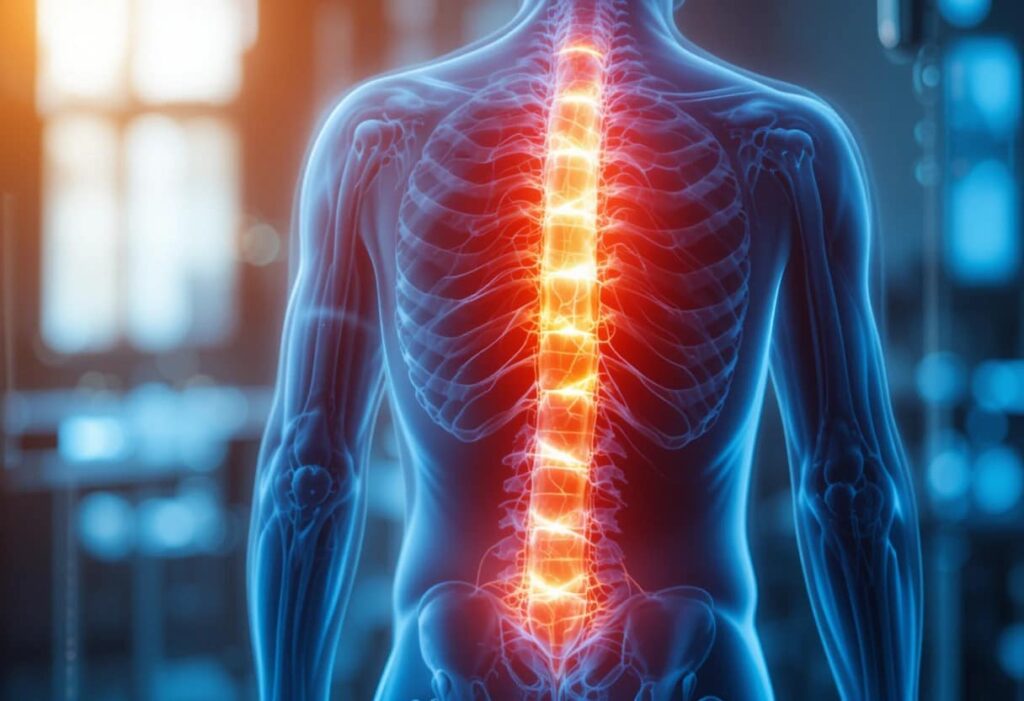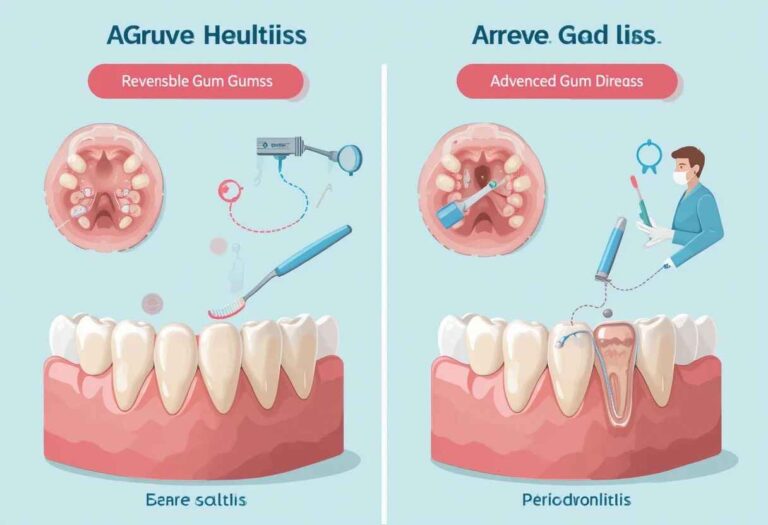Is Degenerative Disc Disease A Disability – Find Out If You Qualify For Benefits!
Degenerative Disc Disease (DDD) is a common condition that affects millions of people worldwide. Although it sounds serious, DDD is a natural part of aging where the discs between the spinal bones lose cushioning and flexibility. For some, this causes mild discomfort, but for others, the pain and limitations can be severe enough to impact daily life and work.
This raises an important question: Is degenerative disc disease a disability? In this article, we will explore what DDD is, when it qualifies as a disability, how to apply for disability benefits, and what you can expect from the process. We will also cover common symptoms, related conditions, and the Social Security Administration’s (SSA) perspective on this disorder.
What is Degenerative Disc Disease?
Degenerative Disc Disease is not a “disease” in the usual sense but rather a condition caused by the normal wear and tear on spinal discs. These discs act like shock absorbers between the vertebrae (spinal bones), helping the spine move smoothly. Over time, these discs can lose water content, shrink, and become less flexible. This deterioration can cause the vertebrae to rub against each other or put pressure on nearby nerves, leading to pain and other symptoms.
Common Symptoms of Degenerative Disc Disease:

- Chronic back or neck pain
- Stiffness and limited movement
- Numbness or tingling sensations in the limbs
- Muscle weakness
- Pain that worsens with activity or prolonged sitting
These symptoms vary in severity from person to person. While some manage the condition with exercise and medication, others face intense pain and mobility problems that limit their ability to work or perform daily tasks.
When Is Degenerative Disc Disease (DDD) Considered a Disability?
The Social Security Administration (SSA) receives many disability claims based on degenerative disc disease (DDD). Most of these applications include medical evidence of additional spinal conditions that often develop alongside DDD, such as:
- Endplate sclerosis – hardening of the tissue around spinal discs
- Retrolisthesis – when a vertebra shifts backward in relation to a disc
- Multilevel spondylosis – degeneration affecting multiple spinal vertebrae (lumbar, thoracic, or cervical)
- Herniated discs – bulging or ruptured spinal discs causing pain or nerve issues
Since DDD tends to worsen over time, even mild early stages can lead to serious complications. As disc space narrows, the spine becomes unstable, prompting the body to form bone spurs. These spurs can press on nearby nerves, potentially leading to conditions like spinal stenosis, which restricts nerve signals traveling to the arms and legs.
If your degenerative disc disease results in severe and long-lasting work limitations, you may be eligible for Social Security Disability benefits.
When Does Degenerative Disc Disease Become a Disability?
A disability is generally defined as a physical or mental condition that substantially limits one or more major life activities, including the ability to work. Many people wonder, “Is degenerative disc disease a disability?” The answer depends on the severity of the condition and how much it affects your ability to maintain gainful employment.
The Social Security Administration (SSA) evaluates disability claims based on specific medical and functional criteria. To qualify for Social Security Disability Insurance (SSDI) or Supplemental Security Income (SSI) due to DDD, applicants must prove that their condition severely limits their ability to perform work for at least 12 months.
Key Factors SSA Considers:
- Medical evidence: X-rays, MRIs, and doctor’s notes that show disc degeneration, nerve compression, or related spinal disorders
- Functional limitations: Restrictions on lifting, sitting, walking, or performing physical activities at work
- Duration of disability: The condition must be expected to last at least 12 months or result in death
- Age, education, and work experience: These influence whether you can adjust to less demanding jobs
What Are the Common Spinal Conditions Related to Degenerative Disc Disease?
Degenerative disc disease rarely exists in isolation. It often comes with other spine-related problems that can worsen symptoms and affect disability claims. Some common related conditions include:
| Condition | Description | Impact on Disability Eligibility |
| Herniated Disc | When the inner gel of a disc pushes out and presses on nerves | Causes severe pain and nerve issues, supporting disability |
| Spinal Stenosis | Narrowing of the spinal canal puts pressure on nerves | Leads to numbness, weakness, and walking difficulties |
| Spondylosis | Degeneration of the vertebral bones and discs, causing bone spurs and inflammation | Causes pain and limited mobility |
| Retrolisthesis | A vertebra slips backward, compressing spinal nerves | Affects balance and mobility |
| Endplate Sclerosis | Hardening of bone near the discs | Contributes to pain and stiffness |
Understanding these conditions is crucial because the SSA looks at the overall impact on your spine and nerves, not just the diagnosis of DDD alone.These conditions make the case stronger when asking, “Is degenerative disc disease a disability for social security?”
How does the Social Security Administration Defines Disability for Degenerative Disc Disease?
The SSA uses two main methods to decide if someone with degenerative disc disease qualifies for disability benefits:
Meeting a Listed Impairment (Medical Listing 1.15):
This is a strict medical standard. If your condition meets or equals the SSA’s official listing for spinal disorders, you are automatically considered disabled. The listing requires:
- Significant nerve root compression causing pain, weakness, and sensory loss
- Medical imaging showing disc degeneration affecting nerves
- Functional impairments such as needing assistive devices to walk or severe limitations in hand use
Meeting this listing can be difficult because it requires extensive medical proof of severe symptoms.
Showing Work Restrictions that Rule Out All Jobs:
If your condition doesn’t meet the medical listing but still prevents you from working any job, you may qualify based on your residual functional capacity (RFC). This is an assessment of your ability to do physical and mental work tasks despite your condition.
For example, if DDD limits you to sitting most of the day, lifting very little, and you have concentration issues due to chronic pain, you may not be able to perform your past work or any other jobs available.
The Process of Applying for Disability Benefits with Degenerative Disc Disease – Avoid Common Mistakes!
Applying for disability benefits can seem complicated, but understanding the steps can help you prepare a strong claim:
Confirm Eligibility:
First, check if you meet Social Security’s requirements. You must have paid enough Social Security taxes through work or qualify for need-based Supplemental Security Income (SSI). Without meeting these basic criteria, you cannot move forward with a disability benefits claim for degenerative disc disease.
Gather Medical Evidence:
Collect all medical documents related to your condition. This includes doctor’s notes, imaging tests like MRIs or X-rays, treatment records, and any reports showing how degenerative disc disease affects your daily activities and work ability. Strong medical evidence is key to proving your disability to the Social Security Administration.
Submit an Application:
You can apply for disability benefits online via the Social Security website, by calling the SSA’s toll-free number, or by visiting your local Social Security office in person. Choose the method that works best for you, but ensure you provide all necessary information to avoid delays in processing your application.
Wait for a Decision:
After submission, the Social Security Administration reviews your medical records and work history. This evaluation process can take several months. They assess how your degenerative disc disease limits your ability to perform work-related activities and determine if you meet the criteria for disability benefits.
Appeal if Needed:
If your initial application is denied, you have the right to appeal. The appeals process starts with a request for reconsideration, followed by a hearing before an administrative law judge if needed. Don’t lose hope — many applicants receive benefits after successfully appealing the decision.
Also read: Acibadem Health Point – Fast, Personalized, And Global Health Services!
What Helps Your Disability Claim for Degenerative Disc Disease?

- Medical Documentation: Gather detailed medical records and specialist reports that confirm your degenerative disc disease diagnosis. These documents should show the severity of your condition and how it affects your spine and overall health.
- Symptom Impact Proof: Provide clear evidence of how your symptoms disrupt your daily activities and work. Use personal statements, medical notes, and doctor observations to explain the pain, limited mobility, or other issues caused by your condition.
- Treatment History: Maintain a thorough record of all treatments you have undergone, such as medications, physical therapy, and surgeries. Consistent treatment documentation helps prove that you have followed medical advice and your condition persists despite care.
- Support Statements: Collect statements from people who know your situation well, like employers, family members, or friends. Their accounts can support your claim by describing how your degenerative disc disease limits your physical abilities and daily functioning.
- Work Limitations Explained: Clearly describe why your condition stops you from doing your past jobs or any other work. Explain physical restrictions, pain levels, and other factors that reduce your capacity to perform work-related tasks safely and effectively.
How the SSA Defines Disability for DDD?
The SSA uses two primary methods to decide if someone with DDD qualifies for disability:
Meeting the Medical Listing (Listing 1.15):
If your condition meets or equals the SSA’s official Listing 1.15 for spinal disorders, you are automatically considered disabled.
Requirements include:
- Nerve root compression causing pain, weakness, and sensory loss
- Medical imaging showing degeneration impacting nerves
- Functional impairments such as difficulty walking or using hands
Based on Residual Functional Capacity (RFC):
If you don’t meet the listing but still can’t work any job, your eligibility is judged on your residual functional capacity. This looks at what activities you can still do despite your condition. If your DDD restricts your ability to sit, stand, walk, lift, or concentrate, you may still qualify.
This is especially important when evaluating is multilevel degenerative disc disease a disability, as multiple levels of degeneration often indicate greater limitations.
How Can You Qualify for Disability Due to Degenerative Disc Disease (DDD)?
To qualify for Social Security Disability benefits for degenerative disc disease (DDD), applicants must first meet basic eligibility criteria. This means proving financial eligibility through Supplemental Security Income (SSI) or having paid enough into Social Security to qualify under Social Security Disability Insurance (SSDI).
Next, you’ll need to show that your condition prevents you from working and earning above the Substantial Gainful Activity (SGA) level, which is currently around $1,550 per month. The SSA only considers long-term disabilities—your condition must prevent you from working for at least 12 months. Temporary or short-term issues don’t qualify for benefits.
Once basic eligibility is confirmed, the SSA will review your medical records to determine if your condition is disabling. There are two ways you can be found disabled:
Meeting the SSA’s Medical Listing for Spine Disorders:
The SSA maintains a list of impairments that automatically qualify as disabilities if certain criteria are met. For DDD, this falls under Listing 1.15: Disorders of the skeletal spine resulting in compromise of a nerve root.
To qualify under this listing, your medical records must show:
- Persistent symptoms like pain, numbness, or fatigue
- Diagnostic tests confirming nerve compression, reduced reflexes, or muscle weakness
- Imaging (X-ray, MRI, or CT scan) showing disc degeneration affecting the nerve
- Significant physical limitations, such as an inability to walk unaided or difficulty using your hands and arms for work tasks
Meeting this listing can be difficult. For instance, if you don’t require assistive devices like a walker or cane, you likely won’t qualify under Listing 1.15. However, if your condition prevents you from working—even if it doesn’t meet the listing—you may still be eligible based on functional limitations.
Getting Approved Based on Residual Functional Capacity (RFC):
If you don’t meet the criteria for Listing 1.15, you may still qualify for benefits based on how your DDD limits your ability to work. This is done through an RFC assessment, which evaluates the most you’re physically and mentally capable of doing in a work setting.
For people with DDD, typical RFC limitations may include:
- Difficulty lifting heavy objects
- Needing to sit or lie down frequently
- Inability to stand or walk for extended periods
- Pain that affects focus, attention, or memory
The SSA will compare your RFC with the physical and mental demands of your past work. If you can’t return to your previous job, they’ll evaluate whether you can adjust to other types of work. Factors like your age, education level, and job history are taken into account.
Applicants under 50 years old must prove they can’t do even the most basic sedentary jobs to qualify. Those 50 and older may benefit from the SSA’s “grid rules,” which make it easier for older applicants to qualify.
Also read: When Is It Too Late To Reverse Gum Disease – Expert Advice You Need Now!
Why is it important to monitor symptoms of Degenerative Disc Disease regularly?
Degenerative Disc Disease (DDD) is a chronic, progressive condition that usually worsens over time. In the early stages, symptoms may be mild or occasional, but as the discs continue to deteriorate, pain, stiffness, and mobility issues often increase. Over the years, related spinal problems like herniated discs or spinal stenosis may develop, leading to greater discomfort and possible disability. It is important to regularly monitor symptoms and follow a treatment plan to manage pain and maintain function. Early and ongoing care can help slow progression and improve quality of life.
Symptom Fluctuation and Its Impact on Disability Claims – Key Tips for Approval!
Symptoms of degenerative disc disease can change daily, making proof difficult.
Symptom Variability Over Time:
Degenerative disc disease symptoms can vary significantly day to day. Some days may be manageable, while others cause severe pain and mobility issues. This inconsistency makes it harder to prove a constant disability since decision-makers look for stable, ongoing limitations. Patients need to carefully track how symptoms fluctuate to provide an accurate picture of their condition over time.
Lack of Objective Pain Measurement:
Pain caused by degenerative disc disease is mostly subjective and difficult to measure with standard medical tests like X-rays or MRIs. There are no clear objective tools that can quantify the exact intensity of pain. This lack of measurable evidence can make it challenging to convince authorities of the severity of your condition and its impact on daily life.
Proving Long-Term Work Limitations:
To qualify for disability benefits, it’s essential to demonstrate that degenerative disc disease causes severe and long-lasting restrictions on your ability to perform work. Temporary or minor limitations often don’t meet the threshold. Showing consistent, documented inability to carry out job tasks or any kind of employment is key in building a successful disability claim.
Importance of Detailed Medical Documentation:
Medical records from specialists, including test results, treatment notes, and doctors’ opinions, play a crucial role in proving degenerative disc disease as a disability. Detailed documentation helps establish the diagnosis, severity, and progression of the condition. It also supports claims about pain levels and functional impairments, providing evidence that your condition seriously affects your daily life.
Consistent Treatment and Follow-Up:
Maintaining regular medical treatment and follow-up visits shows that your degenerative disc disease is a chronic and serious condition. It proves that you are actively managing your symptoms but still suffer significant limitations. Consistency in treatment history, including physical therapy, medications, and other interventions, strengthens your case for disability benefits by highlighting ongoing struggles.
What symptoms distinguish mild DDD from disability-qualifying DDD?
| Aspect | Mild Degenerative Disc Disease | Disability-Qualifying Degenerative Disc Disease |
| Pain Level | Mild to moderate, occasional | Severe, chronic, affecting daily activities |
| Mobility | Usually normal or slightly limited | Requires assistive devices or is unable to walk |
| Work Ability | Can perform most jobs | Unable to perform past or any jobs |
| Medical Evidence | Minimal nerve involvement | Clear nerve compression and functional loss |
| Treatment | Conservative (exercise, meds) | Intensive (surgery, pain management) |
FAQs:
1. How hard is it to get disability for degenerative disc disease?
Getting disability for degenerative disc disease can be difficult. You need strong medical proof showing your condition seriously limits your ability to work. The Social Security Administration looks for evidence of pain, loss of function, and inability to perform job tasks.
2. Is mild degenerative disc disease a disability?
Mild degenerative disc disease usually does not qualify as a disability. Symptoms are often manageable and do not significantly limit work or daily activities. Disability benefits are generally approved only when the disease causes significant pain or mobility problems.
3. What are the SSDI Blue Book criteria for degenerative disc disease?
The SSDI Blue Book requires specific findings like nerve root compression, spinal arachnoiditis, or spinal stenosis. You must also show significant limitations in movement or function. Meeting these medical criteria helps prove that your degenerative disc disease qualifies for disability.
4. Is degenerative disc disease a permanent disability?
Degenerative disc disease is often chronic and may worsen over time. Whether it is permanent depends on how severe the symptoms are and if treatments help. Some people experience ongoing limitations, while others improve with proper care.
5. What are common work restrictions for degenerative disc disease?
Common work restrictions include avoiding heavy lifting, prolonged sitting or standing, bending, or twisting. Jobs requiring physical exertion or repetitive motions can worsen symptoms, so these restrictions help protect your spine and manage pain during work.
Conclusion:
To wrap up, degenerative disc disease can be considered a disability if it significantly limits your ability to work for at least 12 months. Whether you qualify depends on the severity of your symptoms, your medical records, and how much your condition impacts your ability to perform daily and job-related tasks.
Understanding how the SSA views is degenerative disc disease a disability for social security and being prepared with thorough documentation gives you the best chance at a successful claim. If you’re struggling, don’t hesitate to seek support from a disability attorney or advocate to help you through the process.
Related post:






